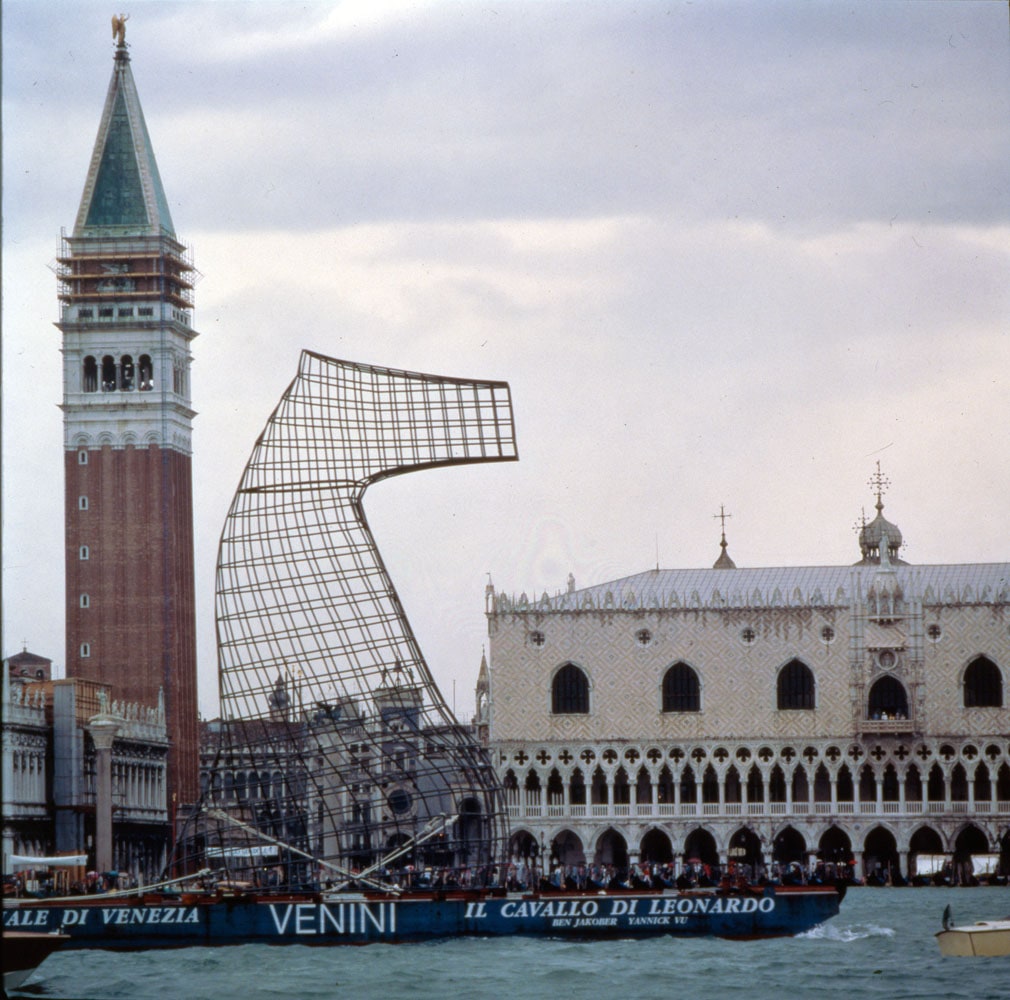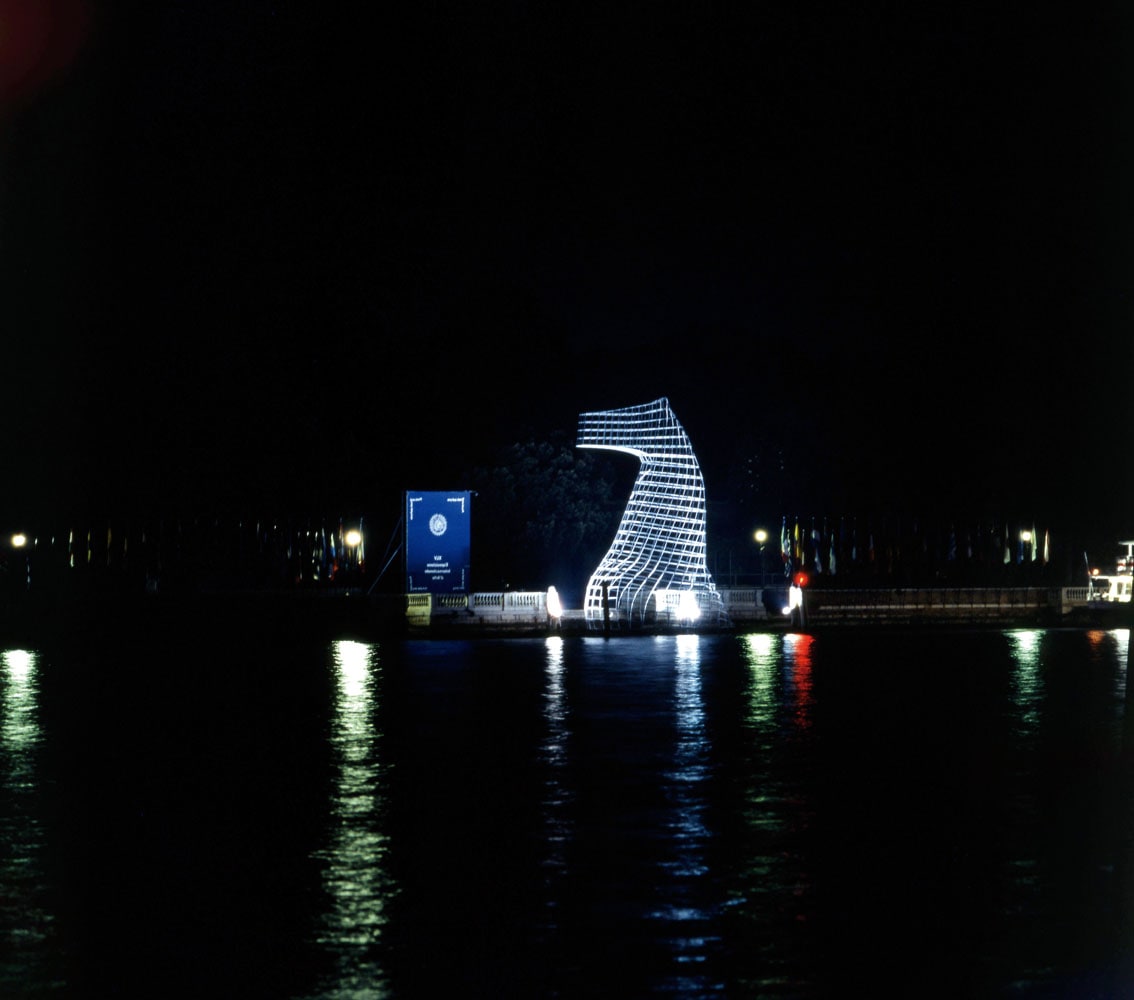16 November 2012
 Il Cavallo di Leonardo c, (2nd metal maquette), 1992
Il Cavallo di Leonardo c, (2nd metal maquette), 1992
Iron, 95 x 51 x 61 cm
Yannick and Ben Jakober Foundation Collection
In 1493, exactly 500 years ago, Leonardo da Vinci was finishing the preparations for casting the equestrian monument (4 times life size), which Ludovico il Moro, Duke of Milan commissioned in memory of his father some 12 years earlier. In a workshop of the Corte Vecchia in Milan, the giant clay form, the moulds, supports and furnaces were ready, but war broke out, the bronze was confiscated and the statue was never made.
Leonardo had studied the procedure of fabrication down to the last detail even going to the length of drawing the iron armature which was to hold the ceramic moulds of the head and neck of the horse in place, as testify the folios 141 to 157 of Madrid Codex II, officially lost since 1830, then rediscovered in 1965 in the National Library of Madrid, where they remain. These drawings and texts, while confirming Leonardo’s scientific preoccupations, reveal in a concise manner the innovative approach envisaged for the casting, projected in a single operation a technique still unknown at the time and only developed two centuries later.
 One of these plates (157 r) inspired Ben Jakober and Yannick Vu to imagine a three dimensional interpretation. Using Leonardo’s drawings and indications, the artists with the technical collaboration of Venini built a model of iron and glass a tenth of the final size. The images of the model were transferred via a scanner to a computer, in which the detailed construction plans of each level were drawn. This information allowed the enlargement to 14 metres to proceed not on a subjective basis, as is often the case when a sculpture is “blown up” by a fabricator, but enabled the construction team to build the final work exactly as defined by the artists.
One of these plates (157 r) inspired Ben Jakober and Yannick Vu to imagine a three dimensional interpretation. Using Leonardo’s drawings and indications, the artists with the technical collaboration of Venini built a model of iron and glass a tenth of the final size. The images of the model were transferred via a scanner to a computer, in which the detailed construction plans of each level were drawn. This information allowed the enlargement to 14 metres to proceed not on a subjective basis, as is often the case when a sculpture is “blown up” by a fabricator, but enabled the construction team to build the final work exactly as defined by the artists.
By decision of Achille Bonito Oliva and the Committee directing the Biennial the project was realized. The 14 metre high sculpture welded on pilings in the lagoon in front of the entrance to the “Giardini di Castello” is the emblem of the 45th Venice Biennial inaugurated on the 13th of June 1993 by Luigi Scalfaro, President of the Italian Republic.

The model and drawings realized on computer then drawn by plotter are also exhibited in the Venini Space on Canal Grande during the whole of the Biennial, illustrating the preparations for the execution of the sculpture.
The fiability of the structure and the concept of the support, as well as the joining of one to the other were formulated by naval engineers and Coyne et Bellier of Paris (creators of the Défense Tower) using a programme that simulated wind and sea conditions.This monumental piece was built at Mira and assembled at Marghera, then transported standing on a pontoon through the Giudecca Canal, passing in front of San Marco to the “Giardini”.*
* This is the edited version of the catalogue text Il Cavallo di Leonardo, Ben Jakober Yannick Vu, Venice (1993).

Inspired by the exhibition And Now the Good News, which focusing on the relationship between mass media and art, we prepared horoscope readings based on the chapters of the exhibition. Using the popular astrological language inspired by the effects of the movements of celestial bodies on people, these readings with references to the works in the exhibition make fictional future predictions inspired by the horoscope columns that we read in the newspapers with the desire to receive good news about our day.

Published as part of Pera Learning programs, “The Little Yellow Circle (Küçük Sarı Daire)” is a children’s book written by Tania Bahar and illustrated by Marina Rico, offering children and adults to a novel learning experience where they can share and discover together.
Tuesday - Saturday 10:00 - 19:00
Friday 10:00 - 22:00
Sunday 12:00 - 18:00
The museum is closed on Mondays.
On Wednesdays, the students can
visit the museum free of admission.
Full ticket: 300 TL
Discounted: 150 TL
Groups: 200 TL (minimum 10 people)